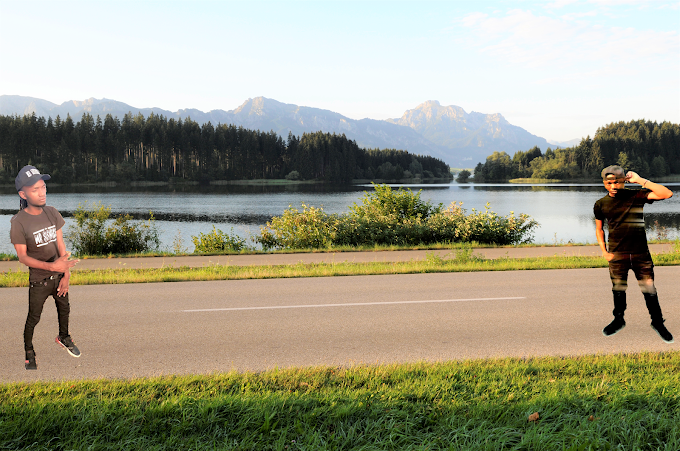AFRICAN BIRDS EYE CHILLI FARMING (kACHOLO)
African Birds eye Chilli (ABE), also known as Birds Eye Chilli(BEC) or Bird’s Eye Chilli is one of the hottest and pungent chillies in the world. Known by the scientific name, capsicum frutescens, the African Birds Eye Chilli originated from Mexico and introduced to the world by Portuguese and Spanish colonialist, traders and missionaries. It can be found growing in the wild, in small scale farms and commercial farms, for local consumption and export to Europe and America.
Grown mostly in Africa and Asia, with Malawi leading the African production of the Birds Eye Chilli. Other African countries that produce the African Bird’s Eye Chilli are Kenya, Ghana, Uganda, Zimbabwe, Zambia, Mozambique and South Africa.
Something interesting about the African Bird’s Eye Chilli is the pungency or “hotness” depends on the climate where it is grown, with some countries producing more pungent African Bird’s Eye Chillies than others.
What do you need to start African Birds Eye Chilli Farming? In the article we look at the History of the Birds Eye Chilli, The health benefits, production planning, ecological requirements, intercropping and crop rotation, setting up a mother garden for seeds, propagation nursery and land preparation, transplanting, fertilizers, mulching, irrigation, diseases and pests, intercultural practices, yield per acre, harvesting, drying, grading, market requirements, labelling and storage of the African Birds Eye Chilli.
ADVANTAGES OF THE AFRICAN BIRDS EYE CHILLI
The African Bird’s Eye Chilli is popular among farmers because of its hardiness and low input costs. It can be grown in marginal areas.
As a perennial plant, the African Bird’s Eye Chilli is productive for 2 to 3 years. This means you do not need to uproot the plants after each harvest. You can harvest for several years, before planting a new crop.
PLANNING PRODUCTION OF THE AFICAN BIRDS EYES CHILLI
You need to plan well when venturing into African Birds Eye Chilli Farming.
The first thing you need to be sure of is the market. Who will buy your chilli after harvesting? Do you plan to do value addition? Do you have a contract with a buyer? Are you planting African bird’s eye chillies for export or for local production? Answering these questions will help you plan how much chilli to plant.
The second thing is you need to plan for the labour required, especially during harvesting. Harvesting African birds eye chilli is labour intensive and can irritate the labourers because of its pungency. You should only plant enough African Birds Eye Chilli that you will be able to harvest.
Whether you are buying seeds or getting seeds from your own seed mother garden, ensure you plant certified high-quality seeds. This will help you get high quality produce.
For disease control, ensure that no crop from the same family as the African Bird’s Eye Chillies has been grown for the past one year. These include other chillies, tobacco, brinjals, tomatoes, potatoes etc
YIELDS PER ACRE OF THE AFRICAN BIRDS EYES CHILLI
African Bird’s Eye Chillies yield of 600 grams to 1000 grams of fresh chilli per plant per year, translating to about 200 grams of dried chilli per plant. This translates to between one tonne to three tonnes per acre.
INTERCROPING AND CROP ROTATION FOR THE AFRICAN BIRDS EYES CHILLIS
African Bird’s Eye Chillies belong in the solanaceous family. They are prone to the same soil diseases. It is advisable not to intercrop or rotate with crops from the same family.
Give the land a one year break from chillies after 2 to 3 years of having the chilli crop on the same patch of land. For rotation and intercropping, plant crops from another family e.g legumes and chillies. Examples of these are cowpeas, beans, cowpeas, soya, groundnuts, sweet potatoes, cassava etc. Legumes will provide an added advantage of improving soil fertility through fixing nitrogen.
ECOLOGICAL REQUIREMENTS FOR THE AFRICAN BIRDS EYE CHILLI
These chillies will thrive well in organic-rich, light loamy, well-drained soils, with an optimal pH of 6.0 to 6.5. African Birds Eye Chillies can tolerate a wide range of PH of between 4.3 to 9.7. Low humidity hurts the buds, fruits and flowers.
The optimal temperatures for growing the African Bird’s Eye chilli is between 20 degrees Celsius and 30 degrees celsius. Temperatures below 16 degrees celsius and above 32 degrees celsius will prevent the chilli fruit from developing.
African bird’s eye chillies require a 150 CM, 600 to 1200 cm per year. Too much rain will lead to rotting and leaf dropping and too little rainfall will lead to dropping of fruits and aborting of flowers.
PROPAGATION AND NURSARY FOR THE AFRICAN BIRDS’s EYE CHILLIES
African bird's eye chilies should first be planted in a nursery, at the seed rate of 500 grams per hectare (about 2.5 acres). 20 grams of seed should give 500 plants.
The nursery should be raised, with a width of 1M and length of any desired size, with well-applied manure. Dip the seeds in water on the day of planting. Only plant the seeds that sink. The seeds should be planted in 1cm deep drills, with 10cm spacing across the nursery and covered lightly with soil.
After germination, thin 2-3cm and let the rest of seedlings develop until it is time for transplanting at about 6 weeks. At this stage, the African Bird’s Eye Seedling should have 5-6 leaves.
Pinch off the top buds about 10 days before transplanting. This will make the plant develop several strong branches after transplanting and also prevents an attack from thrips that suck the top leaves and spread the leaf curl virus.
LAND PREPARATION FOR PLANTING THE AFRICAN BIRDS’s EYE CHILLIES
Preparing the land for African Bird’s Eye Chillies should be done early enough. Plough and harrow the land. The rows should be 6 metres apart for intercropped ABE chilies and 1 to 1.5 metres for mono cropped ABE chilies.
Mix one tonne of well-decomposed manure and mix well with the soil.
TRANSPLANTING THE AFRICAN BIRDS’s EYE CHILLIES SEEDLINGS
In 6 weeks, the African Birds Eye chili seedlings should be ready for transplanting from the nursery. If planted in trays, they grow faster and are ready for transplanting in 4 to 5 weeks.
Transplanting should be done in the evening after watering the plants in the nursery. This is to give time for the seedlings to recover from the stress of transplanting. If done in the morning or during the day, the seedlings might not survive the hot weather.
If you are planting only the ABE chilies without other crops, the recommended spacing is 45cm by 60 cm. When intercropping the spacing should be 1 metre. This is the distance between two African bird's eye plants.
Irrigate the plants after transplanting. Avoid water stagnation. In the event there are no rains, continue irrigating when the soil becomes dry (2 cm deep).
FERTILIZERS AND MULCHING OF THE AFRICAN BIRDS’s EYE CHILLIES
If not grown organically, apply DAP fertilizers, 25 grams per plant. This is applied to the soil before transplanting.
CAN fertilizer is used for top dressing at four weeks or when the plants are about 15 cm tall, 10 grams per plant. CAN fertilizer should be applied every two months.
Potassium fertilizer is applied if potassium is not available in the soil. It is recommended to carry out a soil test so as to tell which microelements are lacking in the soil.
Apply mulch to conserve moisture, increase soil fertility, and prevent the growth of weeds. Mulch should be applied two times a year, just before the rains.
Manure or compost should be applied at the rate of 2 handfuls per hole This translates to about 10 tonnes per hectare.






















